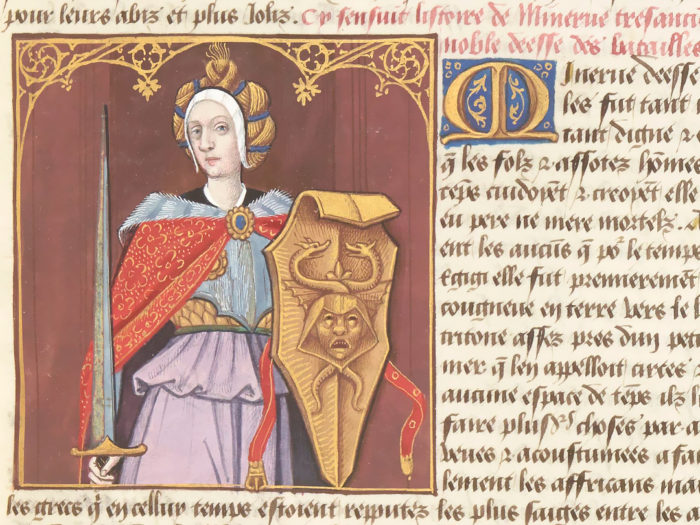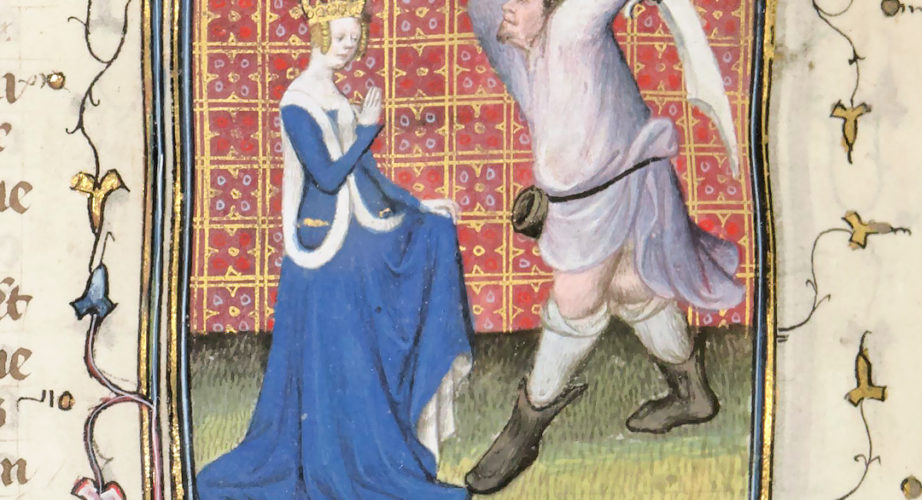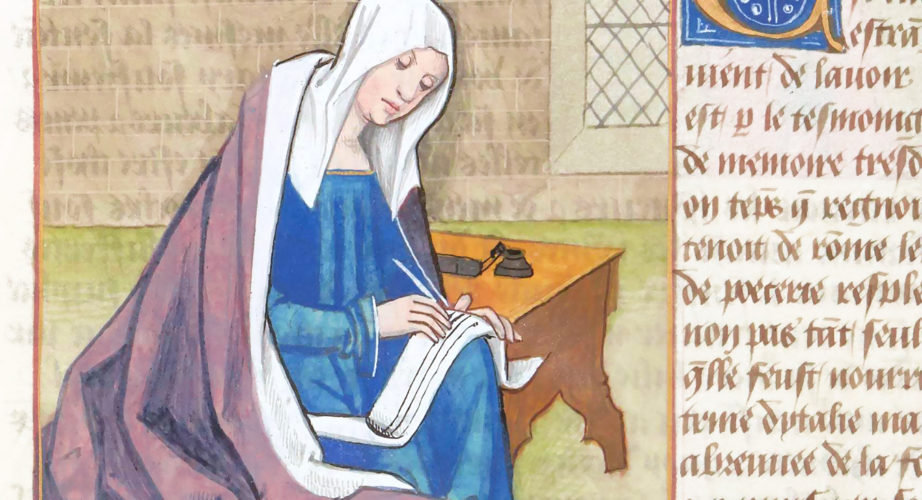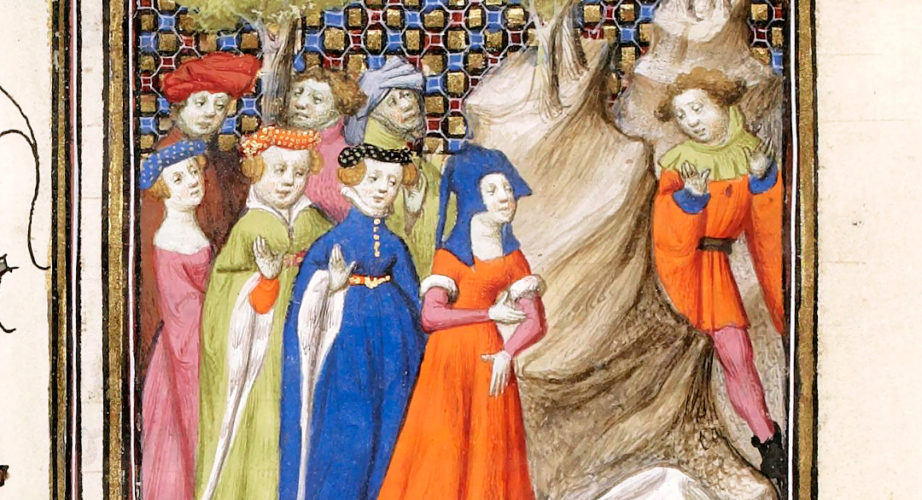Minerva

Our journey to the discovery of the many Mulieres Clarae continues with a multi-faceted goddess, Minerva. Robinet Testard, as shown in the illumination above, chose to depict her warrior side by arming her with sword and shield.
According to Greek mythology, Minerva (known by the Greek with the name of Athena) used Medusa’s head as a talisman after the latter was killed: by inserting it right in the middle of her shield, the goddess created the aegis, an enchanted shield which was able to petrify her enemies. Despite her representing the loyalty and virtues needed in battle, Minerva’s worshippers (who were used to confine women to the domestic sphere) preferred to remember her for other deeds. Minerva, in fact, was also the goddess of wisdom, wit and weaving, as well as the patron of artisans and the inventor of the weaving loom and the cart. In the De Mulieribus Claris, Boccaccio thoroughly describes her diverse sides, though also exposing an inconsistency: it is likely that it wasn't a single and eclectic Minerva to take that many roles on herself, but many different women later embodied in the same goddess.
“Minerva”, illumination from the manuscript “De Mulieribus Claris”, decorated by Robinet Testard, ms. Français 599, f. 9r, 1488-1496, Bibliothèque Nationale de France, Département des Manuscrits, Paris.
Historically and mythologically speaking, being in a powerful position (and perhaps also a…
The time has finally come for the very first Women’s Wednesday of 2021!…
Welcome back to another Women’s Wednesday! Our weekly Mulier Clara, much like Sappho…


